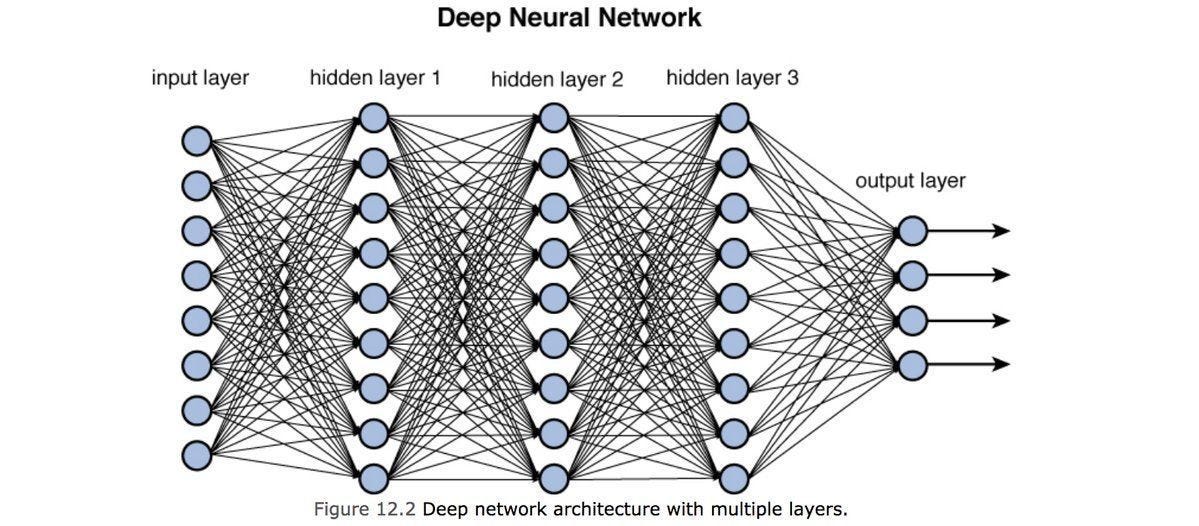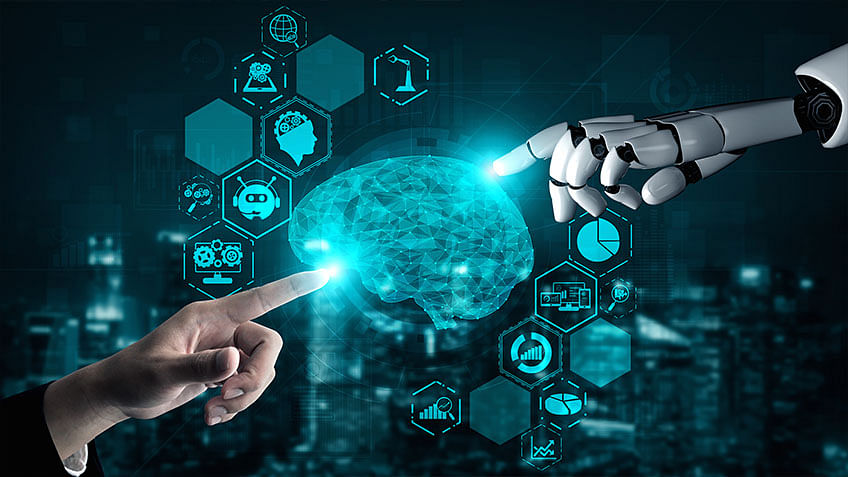Artificial Intelligence (AI) has undergone remarkable advancements in recent years, with deep learning standing at the forefront of these breakthroughs. The journey to create machines that can understand, learn, and perhaps one day emulate human cognition has captivated scientists, researchers, and tech enthusiasts alike. The quest to bridge the gap between human intelligence and artificial intelligence raises fundamental questions: Can machines think like humans? Can AI systems truly understand and respond to our world with the nuance and adaptability that characterizes human cognition?
At the core of this discussion is deep learning—a powerful subset of machine learning that has demonstrated unprecedented capabilities in complex tasks such as image recognition, natural language processing, and autonomous decision-making. By examining how deep learning models function and exploring the challenges they face, we can better understand the critical role deep learning plays in advancing AI towards human-like cognition.
Understanding Human Cognition
:max_bytes(150000):strip_icc()/what-is-cognition-2794982_final1-fc2c7c2b8e77444f84ca5726400f1a3d.png)
Human cognition encompasses a wide range of mental processes, including perception, reasoning, memory, attention, language, and problem-solving. These processes enable us to interpret and respond to the world in nuanced, adaptive ways. Cognitive psychology and neuroscience have studied these areas for decades, yet much remains unknown. Human cognition involves both innate and learned patterns, with the brain exhibiting a high degree of plasticity and resilience. Through experience, humans are able to generalize from past knowledge to make decisions in new situations—a capability that AI models often struggle to match.
One key challenge in replicating human cognition is its complexity and non-linearity. The brain operates through a vast network of interconnected neurons, with approximately 86 billion neurons and trillions of synaptic connections. These neural networks allow humans to recognize patterns, process information, and create novel solutions to problems. This intricate and adaptive architecture has inspired the development of artificial neural networks (ANNs) in AI, particularly in the field of deep learning.
What is Deep Learning?

Deep learning is a subset of machine learning that leverages artificial neural networks, often with multiple hidden layers, to process vast amounts of data. Inspired by the structure of the human brain, deep learning models use a hierarchical architecture where each layer learns to extract increasingly complex features from the data. This process of representation learning enables deep learning models to handle unstructured data, such as images, text, and audio, with high accuracy.
Some of the key architectures in deep learning include:
- Convolutional Neural Networks (CNNs): Primarily used in image and video processing, CNNs can recognize spatial hierarchies in data and identify patterns within images.
- Recurrent Neural Networks (RNNs): These networks are commonly used for sequential data, like text and speech. RNNs can retain information from previous inputs, making them useful for language processing tasks.
- Transformer Networks: Recently, transformer networks have revolutionized the field of natural language processing (NLP). Models like GPT and BERT are based on transformers, which use self-attention mechanisms to process data in parallel and handle long-range dependencies in text.

Each of these architectures contributes to AI’s ability to recognize patterns, understand language, and perform complex tasks that were once thought to require human-like intelligence. However, while these models excel in specialized tasks, they still face significant limitations in achieving general human-like cognition.
Bridging the Gap: How Deep Learning Approaches Human Cognition
Deep learning has brought AI closer to achieving human-like abilities in certain domains, but fundamental differences remain. The following key areas illustrate both the strengths and limitations of deep learning as it seeks to bridge the gap between machine intelligence and human cognition:
Pattern Recognition vs. Understanding: Deep learning models are particularly adept at pattern recognition. For instance, CNNs can identify objects within an image, and transformers can understand language patterns. However, these models often lack true comprehension. Unlike humans, who can understand the context and underlying meaning behind patterns, deep learning models primarily rely on statistical associations rather than conceptual understanding. This gap is why models like GPT-3 and GPT-4 can generate text that seems coherent but lacks real-world understanding.
Generalization and Transfer Learning: Humans excel at generalizing knowledge from one domain to another and applying previous experiences to new situations. For instance, learning how to ride a bicycle helps a person understand the basics of balance, which can be useful in other activities, like skiing. Deep learning models, on the other hand, are often limited to the specific tasks they were trained for. While techniques like transfer learning—where a model trained on one task is fine-tuned for another—are improving the versatility of deep learning models, they still fall short of achieving the broad generalization seen in human cognition.
Memory and Knowledge Representation: Human cognition relies heavily on memory, which allows us to draw on past experiences to make decisions. Current AI systems, particularly neural networks, lack a robust memory mechanism. While some models, such as RNNs and long short-term memory (LSTM) networks, have attempted to introduce memory-like features, they are limited to handling short-term dependencies rather than long-term knowledge. Advanced architectures like neural Turing machines and transformer-based models have made strides in memory representation, but they still don’t match the brain’s dynamic and context-sensitive recall capabilities.
Reasoning and Problem-Solving: Humans are capable of complex reasoning and creative problem-solving, even when faced with incomplete or ambiguous information. Deep learning models, in contrast, operate on the data they are trained with and struggle with out-of-sample scenarios. Current deep learning models lack true reasoning abilities; instead, they excel at probabilistic pattern matching. Researchers are exploring hybrid models that combine deep learning with symbolic AI—a field focused on logic and reasoning—to enable better decision-making.
Ethics, Bias, and Emotional Intelligence: Another fundamental difference lies in emotional intelligence and ethical reasoning. Human cognition is not just about logical processing but also involves empathy, values, and social intelligence. Deep learning models, lacking intrinsic values or emotional awareness, may inadvertently adopt biases present in their training data. This lack of emotional and ethical intelligence highlights a significant limitation in achieving human-like cognition and raises ethical concerns about the deployment of AI systems in society.
Recent Developments in Deep Learning and the Path Forward
The journey to bridge AI and human cognition continues with exciting advancements in deep learning and AI research. Some notable areas of progress include:
Self-Supervised Learning (SSL): SSL allows models to learn from large amounts of unlabeled data, reducing reliance on manual data labeling. This approach is helping AI systems develop a more nuanced understanding of language and other domains, bringing them closer to the way humans learn from exposure to vast information.
Reinforcement Learning and Multi-Agent Systems: By combining deep learning with reinforcement learning, AI systems can learn through trial and error, improving their ability to handle complex tasks. Multi-agent systems enable collaborative learning, allowing AI agents to learn from one another, which may aid in developing social and cooperative intelligence.
Neurosymbolic AI: Neurosymbolic approaches combine neural networks with symbolic reasoning, creating hybrid models that can perform logical operations and pattern recognition. This combination offers potential pathways for enhancing AI’s reasoning abilities, making it better suited to tasks that require both learning and logic.
Explainable AI (XAI): Deep learning’s black-box nature has been a major limitation, as it makes the models’ decision-making processes difficult to interpret. Explainable AI aims to make these models more transparent, allowing humans to understand and trust their outputs. This transparency is crucial for applications that impact critical areas such as healthcare and finance, where understanding “why” a decision was made is as important as the decision itself.

Challenges Ahead and the Quest for True Artificial General Intelligence (AGI)
Despite these advancements, deep learning faces challenges in achieving human-like cognition and Artificial General Intelligence (AGI)—AI with the flexibility and adaptability of the human mind. Some of the primary challenges include:
- Data Dependency: Deep learning models require vast amounts of data, which can be a limitation in cases where data is scarce or expensive to obtain.
- Computational Costs: Training deep learning models demands immense computational power, raising questions about the scalability and environmental impact of such models.
- Ethical and Societal Impact: The widespread use of deep learning models raises ethical concerns about bias, privacy, and autonomy. Ensuring AI systems are aligned with human values is essential as they become more integrated into daily life.
Conclusion: The Road to Human-Like AI

While deep learning has brought AI closer to human cognition than ever before, there remains a significant gap between current AI capabilities and the adaptability, creativity, and emotional intelligence that define human thought. As researchers explore ways to overcome the limitations of deep learning, including through hybrid models and neuroscientific inspiration, the line between human and artificial intelligence may continue to blur.
The journey to bridge AI and human cognition is as much about understanding ourselves as it is about building machines. Understanding of cognition and leveraging advances in deep learning, we are not just creating smarter machines; we are gaining insights into the very nature of intelligence.
